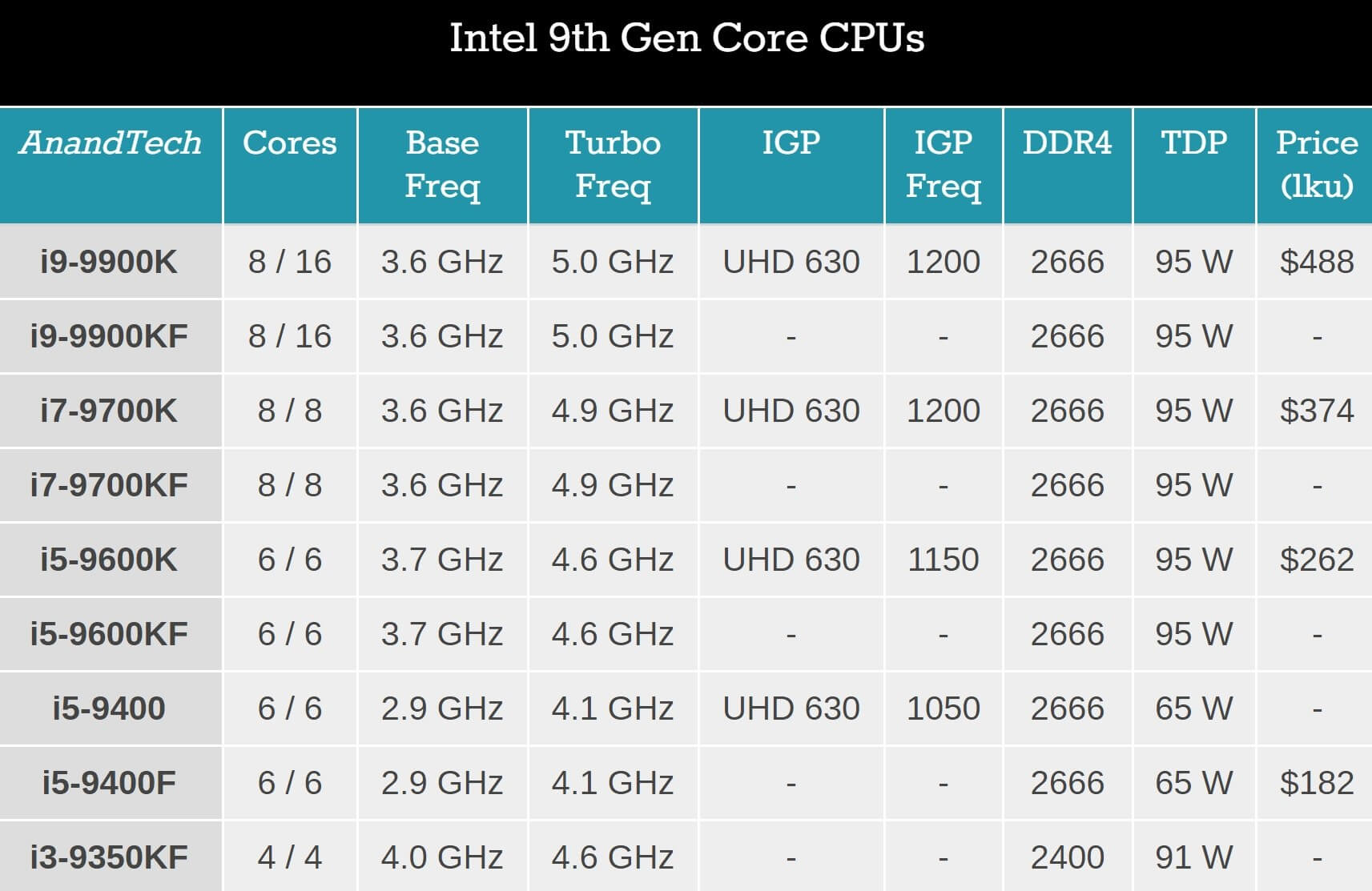What just happened? Intel has just announced that six new CPUs will be joining its 9th generation processor lineup. The new models cover the Core i3, i5, i7, and i9 range and include the F-series chips, which have their integrated graphics disabled.

Rumors of Intel’s “F” variant CPUs arrived last month. The company's Integrated UHD Graphics is disabled in these processors, which will allow for increased yields—Intel could still sell the chips if there are issues with the graphics but the cores are okay. A disabled iGPU could also act as ‘dark silicon;’ a part of the processor that helps spread heat and thus improve thermal performance.
The new Core i9-9900KF, Core i7-9700KF, and Core i5-9600KF CPUs are pretty much the same as the standard non-F versions. Other than lacking integrated graphics, the main difference is that they don’t support Intel's Transactional Synchronization Extensions (TSX-NI).
The other new CPUs include the Core i3-9350KF, which is overclockable but lacks hyperthreading and graphics. There’s also the six-core Core i5-9400F, which is multiplier locked, and the Core i5-9400—the same chip but with Gen9 Intel HD 630 Graphics.
Intel's 9th Gen CPU lineup. Table courtesy of Anandtech
The only official price Intel has revealed so far is for the $182 Core i5-9400F. You can check out previously reported prices from international retailers here, where we posit that the top-end Core i9-9900KF will sell for around $549 in the US.
Intel said it expects “the first of the new 9th Gen Intel Core desktop processors are expected to be available starting this month with more rolling out through the second quarter of this year.”
https://www.techspot.com/news/78160-intel-adds-six-more-cpus-9th-gen-lineup.html
